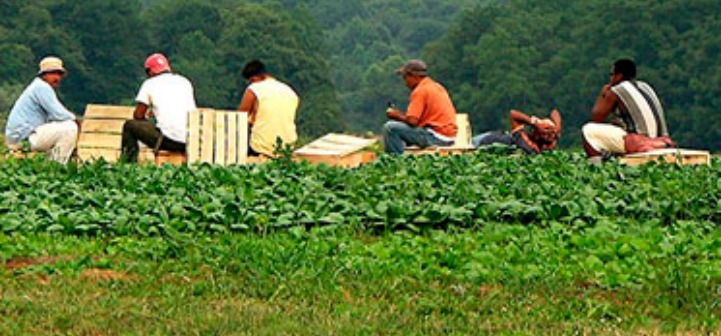By Beverly Hobbs, 4-H Youth Development Specialist, OSU Extension Service
Oregon 4-H is becoming more diverse as it engages an increasing number of first and second generation Latino youth and families. Since 1997, the program has made the involvement of Latino youth a program priority, and steps taken to increase Latino membership have met with success.
Today, one third of Oregon County 4-H programs have identified outreach efforts underway with over 2500 Latino youth and 169 Latino adult volunteers involved in out-of-school programming. This represents a gain of 400% from the base year of 1995-1996.
The success of outreach efforts reflects the increased capacity of Oregon 4-H to appropriately respond to the Latino culture. 4-H has changed the way it meets and invites Latino families to participate and has added new program content and new program delivery formats to meet the needs and interests of Latino youth. Most importantly it has increased the diversity of Extension staff.
A review of Oregon’s 4-H outreach experience over the last seven years reveals some key elements of effective practice. Among them are the following.
Make a firm commitment. Outreach to new and diverse audiences is demanding work. It challenges a person’s outlook on life and sense of competency. It is a personal as much as a professional journey.
-
- Do not undertake outreach unless a long-term commitment can be made. Outreach is not something that is done only as long as the grant funds last.
-
- Outreach should be viewed as a broadening of current Extension practice and integral to Extension work.
-
- Outreach is the work of all Extension personnel, not just the work of those hired specifically for an outreach position.
-
- To succeed, the commitment to outreach must be there on the part of the organization and the individual professional.
Employ bilingual/bicultural outreach staff. The presence of outreach staff who have a deep understanding of the Latino culture and who are fluent in the Spanish language greatly facilitates the process of building relationships and establishing trust with Latino community members.
-
- It is not necessary that staff be Latino. Non-Latino bilingual/bicultural staff can successfully fill this role.
-
- All outreach staff must be able to relate to and be accepted by the targeted community.
-
- If unable to hire their own bilingual/bicultural staff, programs can conduct outreach by partnering with organizations with established ties to the Latino community. This is often a slower process with more limited outcomes.
Emphasize relationships over tasks. Recognize and reflect the importance of personal relationships when working with Latinos.
-
- Before programs are designed and implemented, considerable time must be spent getting to know the community and individuals within.
-
- Relationships must be built with individuals and families as well as organizations.
-
- Take the time to attend to the personal before moving to the task.
-
- When it comes time to invite participation, do so personally by phone or face to face.
Create a welcoming Extension office.
-
- Hang posters or set out decorative objects reflective of the Latino culture.
-
- Have signs and printed materials available in Spanish.
-
- Employ someone who speaks Spanish as the office receptionist.
Involve youth and families in the design of programs. Do not try to fit new audiences into existing programs designed for traditional Extension audiences.
-
- Ask youth and families what they want for programs, identifying both needs and interests.
-
- Be prepared to develop new programs (baile folklorico and soccer clubs, robotics and videography classes) or to modify existing ones (teach computer classes in Spanish).
-
- Once programs are ongoing, seek regular feedback and keep parents informed of what is happening.
Create programs that reflect the Latino culture and create a comfortable learning environment.
-
- Target programs specifically to Latinos. It is very appropriate for programs to initially attract primarily or exclusively Latino membership.
-
- Deliver programs in a language that is most comfortable for families.
-
- Seek Latino volunteers.
-
- Offer a family approach to programs, for instance, parent/child sewing or computer instruction.
Offer separate volunteer training as needed. Most Latinos do not have an understanding of Extension as an organization or its programs. They also may have limited literacy in English and in Spanish.
-
- Explain community-based youth development programs, the particulars of 4-H, and the role of volunteers.
-
- Demonstrate programs.
-
- Offer plenty of help with paperwork and carefully explain why information is needed, who will see it, and how it will be used.
-
- Provide information in the preferred language of volunteers.
-
- Use demonstration and group interaction to deliver training rather than relying on written information.
Proceed slowly, thoughtfully, and incrementally. Don’t attempt too much at one time.
-
- Outreach programs usually require a good deal of support. Trying to quickly meet everyone’s needs will over tax outreach staff.
-
- Staff will need to demonstrate programs, and volunteers often will need a period of mentoring in addition to group training before they are willing to take on leadership responsibilities.
Work with community partners. Partnerships promote the sustainability of programs. Partnerships are also critical to helping Latino youth and families access resources Extension cannot provide.
-
- Work to build a local coalition in support of the positive development of Latino youth.
-
- Help Latino families access resources by connecting them with other community organizations.
-
- Help community organizations become more responsive to the Latino community.
Support outreach staff. A culturally diverse staff requires that attention be paid to developing effective working relationships. Cultural differences impact work styles, preferred styles of communication, and expectations.
-
- Teamwork should characterize the work environment with frequent communication between staff.
-
- Co-workers should acknowledge the importance of outreach efforts.
-
- Time should be dedicated to helping all staff better understand cultural differences and to building trust between co-workers.
Provide state level Extension support and leadership. Working with the Latino audience represents risk-taking for many Extension agents. It puts them in an unfamiliar environment and challenges their feelings of competence.
-
- Dedicating state staff time to outreach reinforces the importance of Latino outreach and brings additional resources to the effort.
-
- State leadership also promotes connection between county outreach efforts, facilitating the sharing of information and experience and the development of a network of support.
Provide staff training. Building cultural competence takes both training and experience.
-
- A planned staff development program focused on working with culturally diverse audiences increases skill levels and builds community among those who work in outreach.
-
- Training should pertain to work with Extension audiences as well as to working relationships among Extension colleagues.
Develop supporting resources. Outreach will prompt requests for new resources, especially ones to help current staff understand diverse cultures and to help diverse audiences understand Extension.
-
- These tools are important to the success of outreach staff.
-
- Products developed in Oregon include a Latino Outreach web site, a publication on Latino volunteerism, a Spanish language video to explain 4-H to Latino youth and adults , and a bilingual 4-H recruitment brochure.
The Oregon Outreach 4-H experience has been extremely positive. The interest and involvement of Latino families, the personal and professional growth of staff, and the positive impact on our traditional audiences and other community organizations reinforce our commitment to reaching and engaging Oregon’s diverse communities.


